VR Movies
Experience the Thrill of Virtual Reality Movies in Your Home 2024
Published
6 months agoon
By
VRLOL
If you think the movies you’ve been watching lately have been too run-of-the-mill, perhaps it’s time to step into a whole new world – the world of Virtual Reality (VR). This thrilling technology has already taken the gaming industry by storm, and is now making a huge impact in the entertainment sector. That’s right, now you can experience the thrill of virtual reality movies right in your own home!
No longer will you have to leave your comfy sofa to experience out-of-this-world content. Imagine immersing yourself in the action, feeling like you are a part of the movie. Whether you choose to drift deep in an oceanic exploration, brave a ghostly horror adventure, or hitch a ride with superheroes, the possibilities of VR movies are truly limitless. Now, let’s take a closer look at this incredible emerging technology and how you can bring its magic home.
Quick Summary of Key Points
There are a number of different virtual reality movies currently available, including the films “Spheres,” “Jesus VR,” and “The Martian VR Experience”. Many more virtual reality films are being released constantly, so be sure to check online for the latest releases.
Exploring Virtual Reality Movie Making
Exploring Virtual Reality (VR) movie making is a thrilling and exciting endeavor that can add a completely new level of dimensional immersion to the viewing experience. Creating movies with VR technology provides people the opportunity to see their movie brought to life in a whole new way – allowing them to explore locations, characters, and scenes in ways that weren’t possible before.
Currently, there are many different aspects of filmmaking that include VR capabilities. For example, some filmmakers are using motion capture footage of their actors playing out a scene by integrating that data into their animated movies or video games. Other video makers are using specialized cameras with multiple lenses to capture 360-degree views of particular scenes or locations. Additionally, more traditional techniques such as green screen and stop motion animation can be implemented in virtual filmmaking as well.
Many people have questioned whether experiments in virtual reality cinema will lead to mainstream culture embracing this type of media the same way they have embraced traditional films and TV shows. While on one hand, skeptics have argued that the cost of producing and maintaining VR movies would likely always stay prohibitively high barring any significant technological advances being made, backers believe that the creative potential of VR cinema is worth exploring for its own sake and could ultimately lead to radical new forms of storytelling that may become a prominent form of entertainment and art for the future.
Whatever your opinion may be on virtual reality cinema, one thing is for certain: it opens up fascinating possibilities for content creators looking to create unique experiences that go beyond what conventional filming allows. As we continue to learn more about how this powerful technology can be used in creative ways, we next explore the different aspects that make up virtual reality cinema and how it can transform both moviemaking and home viewing experiences alike.
According to a 2018 report, the global virtual reality film and video market is projected to reach a value of $8.13 billion by 2023.
The same report estimates that Europe will lead the market, accounting for more than 30% of global revenue by 2023.
According to reviews from customers, the most popular virtual reality films include KonstructionVR, OuchVR, and ELYSIUM VR.



The Different Aspects That VR Cinema Includes
The exploration of virtual reality movie making brings forth interesting topics centering around the different aspects that VR cinema includes. On one hand, some may argue that in order to have a truly immersive virtual reality experience, it must include things such as an alternative point of view, interactions with characters, and technological advancements that make it seem as if you are really in the movie. On the other hand, others may disagree and say that while these things can enhance the realism of a movie, it is not necessary for a viewer to have an admirable virtual reality experience.
In support of the argument that technology must be utilized in order to have an optimal virtual reality experience, consider watching a movie where you’re able to assume the role of the main protagonist in a setting that has 360-degree 3D views. Being able to switch perspectives from character to character while exploring every angle of the scene makes for an entirely unique experience compared to traditional cinema.
Additionally, integrating interactive elements into movies allows viewers to personally engage with characters and settings on a deeper level than ever thought possible. For instance, narrating your own part in a story or playing minigames showing how each actor reacts depending on your choices provides distinct entertainment that would otherwise be difficult to witness just by reading books or watching films.
This brings us to the idea that no matter which side of the argument you lean towards regarding what VR cinema includes, it is undeniable that technological advances are necessary tools for pushing boundaries and creating cinematic experiences unlike anything we have seen before. Transitioning into the next section we will further discuss how interaction and perspective play an integral role in modern day virtual reality movies allow for new depths of immersion.
Main Takeaways
In virtual reality movie making, technology is necessary to provide an immersive experience. Technology can provide an alternative point of view and interactions with characters that traditional cinema does not have. Additionally, interactive elements in movies create deeper engagement for viewers than traditional film or reading books. Ultimately, technological advances are necessary for pushing boundaries and creating unique cinematic experiences.

Interaction & Perspective in VR Movies
Interaction and perspective in VR Movies provide an unparalleled level of engagement for the average movie-goer. On one hand, users have the ability to manipulate their physical environment and choose how they want to experience a story. For example, a user might choose to follow closely a character’s journey from the first-person perspective or broaden their view for a full 360-degree look via cinematic virtual reality. This level of choice provides a heightened emotional connection with the content being viewed as if it were directly experienced by the user.
On the other hand, many argue that the current technology does not provide enough sensory elements to immerse users in a realistic and convincing environment like traditional films do. For instance, while watching a VR movie at home, there can be limited tactile sensations compared to those found in an actual theater setting. This can create an uncomfortable disconnect between what is seen on screen and what is being physically felt by the viewer.
With more advancements in the near future such as advanced haptics and more detailed visuals, the world of Virtual Reality Cinema is becoming increasingly immersive and interactive. During these transformative moments in cinema history, it’s important to recognize both advantages and disadvantages of having interactive perspectives in VR movies so that viewers can make informed decisions about what type of movie experiences they prefer.
In any case, one thing is certain: no matter which viewpoint you take on this issue – whether it’s for or against – virtual reality media has changed cinema habits forever. We may now transition away from discussing interaction and perspective towards exploring how the audience interacts with characters and plotlines in a more intimate manner than ever before.
How the Audience Interacts with Characters and Plotlines
Interaction and perspective in virtual reality movies have been the topic of much debate, considering how immersive and interactive these experiences can be. But how does the audience interact with characters and plotlines? Some feel that narrative drives the story forward, while others believe audience participation is integral in shaping an experience.
On one hand, films of any kind rely on a compelling narrative to carry viewers through each scene. Audiences are voyeurs to a story, passively receiving a character’s experiences without any input from their own. An interactive element can actually disrupt the story if it detracts from the visuals of what’s happening on the screen.
At the same time, there is evidence that supports viewer engagement as a necessary component for a complete experience. For instance, interactive theatres such as those found at theme parks typically involve participation from audiences members when it comes to driving the storyline forward. Whether it’s yelling out seemingly insignificant sentences or pressing certain buttons to advance scenes, participation from viewers provide further immersion into otherwise one-directional stories.
Audiences can also directly influence elements within stories as well: games such as Keep Talking and Nobody Explodes require players to communicate and work together to complete difficult puzzles or levels; even simple gaming elements such as inputting responses into an app (i.e., answering questions about oneself that shape your virtual match) provide feedback loops that shape a movie’s narrative based on individual choices.
With virtual reality films, viewers don’t just observe – they participate in each step of the journey to create something unique out of an otherwise one-dimensional experience. No matter which side you agree with, audience involvement has become key in advancing stories within VR technology and will only continue to grow in importance for upcoming projects. As we move forward towards experiencing stories through VR technology, it’s important to consider how our actions will shape the movies we observe.



Experiencing Stories through VR Technology
The use of virtual reality technology in movies offers audiences a unique way to experience stories. By providing an immersive platform to learn about characters and discover plotlines, viewers are able to feel as if they are actively engaging within the movie. Not only does this enhance the viewing pleasure of the story, but it also allows people to connect with the characters and storyline more deeply than simply being a spectator.
This novel way of experiencing stories has both benefits and drawbacks. One advantage is that it allows audiences to distinguish between what is real and what isn’t, despite being inside a virtual world. At the same time, some viewers may find disorienting or distracting to differentiate between the physical and created environment during key moments in the film. Whether you believe virtual reality filmmaking can lead to more connected storytelling experiences or if it is a hindrance on understanding the narrative, there is no denying its potential for creating powerful cinematic moments.
As virtual reality evolves, one area where films are seeing particular improvement is in using images and emotions to generate personal experiences. From providing a sense of joy for comedic scenes to generating feelings of distress for intense action sequences, VR filmmakers can enable viewers to share these powerful moments with their peers in an equally unforgettable way. This newfound level of connection between audience members further emphasizes how VR technology can help bolster compelling storytelling.
Overall, virtual reality provides a revolutionary approach to experiencing stories through movies. Whether in terms of connecting with characters or sharing personal experiences with others, this groundbreaking new medium introduces countless opportunities for filmmakers looking for creative ways to tell tales that captivate us all. As we continue exploring these possibilities, we now must delve into how such storytelling can provide intimate emotional responses from those participating in such adventures.
Sharing Personal Experiences Through Images and Emotions
In today’s world, sharing our personal experiences has become easier and more accessible than ever, especially with the introduction of virtual reality technology. Through the utilization of 3D imaging and emotive soundscapes, VR has enabled users to connect with others more deeply by conveying images and emotions as if they were right there in the moment.
For example, when watching a VR movie about someone’s experience traveling to a beautiful location, one can truly appreciate what the person is seeing and feeling. The viewer can get lost in the character’s quest for adventure, sense their joy at discovering something new and exciting, or feel their relief upon coming home after an inspiring journey. This connection can be extremely powerful when done correctly.
On the other hand, some wonder how much of this technology relies on immersive feelings that are manipulated rather than accurate representations or simulations of different realities. While it is true that VR technology can create convincing facsimiles of other realities, its primary strength comes from its ability to express the director’s view on life through strong visuals and sound. Ultimately it is up to individual film makers to decide how this technology will be used—for artistry or manipulation—but when used correctly, it can allow people to experience shared stories on an intimate level that could not be replicated any other way.
The potential applications for this type of storytelling are practically limitless as more immersible technologies are developed. To unlock these possibilities fully however, proper setup and an understanding of different perspectives are key components that must be taken into consideration. In our next section we will explore these in further detail in order to better understand how virtual reality films come together on an experiential level.

Exploring Different Perspectives & Setting up a Virtual Reality Film
Sharing personal experiences through images and emotions has opened up the possibilities of exploring different perspectives when it comes to virtual reality films. With the use of digital technology, these films are now able to take viewers into a different world – a world that can be both exciting and frightening. It is possible to view VR films from the eyes of another character, as if you were in their shoes. What’s more, setting up an immersive VR film environment in your own home is easier than ever.
Those who are worried about the level of complexity associated with setting up a virtual reality theatre may be comforted to know that there are plenty of affordable and simple solutions available on the market. People can buy inexpensive headsets or even make their own. Additionally, many streaming video services now offer 3D and 360-degree viewing options so you don’t have to worry about downloading any special software before enjoying your favorite VR films.
For those who already have access to higher-end equipment, there is a wide variety of options available for creating complex virtual environments in your home or business. For example, Samsung’s Gear VR headset works with its Galaxy phones and Google’s Daydream View uses its Pixel phones for virtual reality immersion. You’ll need additional devices like computers and external monitors as well as specialized game consoles like Sony Playstation VR and Oculus Rift for creating full-scale virtual worlds.
Setting up a virtual reality film experience can be daunting at first but with advancements in technology, it’s much easier than it used to be; regardless of the amount of time consumer have or what type of equipment they have access to. It can provide an exciting way to explore and experience different perspectives without ever leaving the comfort of your own home.
These lessons apply not only to virtual reality films but also games, sports simulations, medical applications and more. With this versatility, virtual reality has grown into an important tool for entertainment, education, communication, exploration and creativity – leading us into the future of getting even more out of our home movie experiences.
The Future of Virtual Reality Films
The landscape of virtual reality films has only just begun to take shape. As viewers become more comfortable with the technology, there is no telling what new and exciting viewing experiences could be created. Industry leaders have already recognized the potential in virtual reality films and are investing heavily in research and development to explore the possibilities. The future of this relatively new cinematic platform promises a heightened sense of immersion, engagement, and connection with films.
One perspective is that the introduction of fully-immersive VR films will revolutionize the entire entertainment industry. With a 360-degree scope, content creators will be able to transport viewers to out-of-this-world environments and give them an unparalleled level of emotional investment that would surpass existing movie formats such as 2D or 3D films. Additionally, advances in technology will enable creators to interact directly with their audiences and influence how they experience each scene in real-time.
On the other hand, some may argue that it’s too early to predict the sizable impact of virtual reality on traditional media. When considering current technology constraints, including often limited views when wearing headsets as well as motion sickness due to sluggish response times, it’s difficult for producers to produce high-quality content on par with existing film formats.
However, critics acknowledge that recent developments have seen steady improvements in both hardware and software capabilities. Headset makers are focused on making devices smaller and lighter while improving the picture resolution and field of view. In addition, measures such as stabilization systems have been implemented to reduce dizziness for long periods. As VR technologies continue to advance at a rapid pace, there’s no doubt that filmmakers can soon exploit the full range of creative potential offered by immersive virtual reality films.
Commonly Asked Questions
How are virtual reality movies seen or experienced?
Virtual reality movies can be experienced through virtual reality headsets. These devices create a fully immersive experience by providing visuals and sound from multiple angles, as well as allowing the viewer to interact with their environment in some cases. With a headset on, you are transported to whichever world is being presented in the movie, and can look around just like you would in real life. This gives viewers an intense sense of presence that allows them to feel like they are actually in the movie itself.
What are the most popular virtual reality movies?
The most popular virtual reality movies right now are horror films such as ‘The Witching Hour’, ‘Paranormal Activity VR’, and ‘The Exorcist: Legion VR’. These films are particularly popular because of their immersive storytelling, 3D scare tactics, and interactive gameplay. These movies deliver a heightened sense of fear and suspense unheard of in traditional flat-screen viewing, making them ideal for experiencing the thrill of Virtual Reality in the comfort of your own home.
What type of technology do virtual reality movies require?
Virtual reality movies require specialized technology, such as a helmet that uses lenses and stereoscopic images to create a 3D world for the viewer. The helmet also contains sensors that monitor the viewer’s head movements so the view can be adjusted in real-time. Additionally, sound systems are used to provide immersive audio experiences. Computers and other hardware components are needed to generate and process the visuals and the audio for an entertaining viewing experience.

You may like

Oculus Quest 2 Game Review – Onward VR

Dream Vision Virtual Reality

Virtual Reality Rumors

Experience the Thrill of Virtual Reality Movies in Your Home 2024

Giantess VR – Explore a House

Explore the Virtual Reality Social Scene with These Top Platforms
Trending
-

 VR Games5 months ago
VR Games5 months agoGiantess VR – Explore a House
-
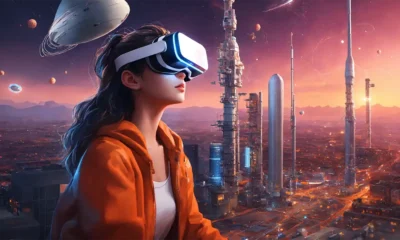
 Virtual Reality6 months ago
Virtual Reality6 months agoExplore the Virtual Reality Social Scene with These Top Platforms
-

 VR Games6 months ago
VR Games6 months agoInto the Radius on Meta Quest 2
-
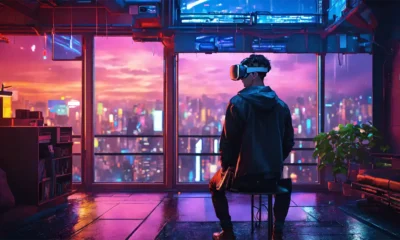
 Virtual Reality6 months ago
Virtual Reality6 months agoExplore Real Estate in Virtual Reality: A Guide to VR Real Estate
-
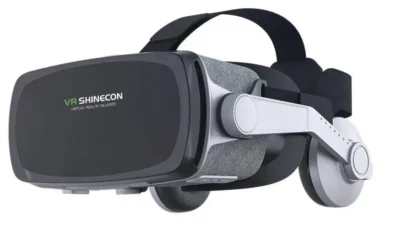
 Virtual Reality5 months ago
Virtual Reality5 months agoVr app for vr shinecon review 2024
-

 Nintendo Switch6 months ago
Nintendo Switch6 months agoUnlock the Power of Virtual Reality with Nintendo Switch!
-
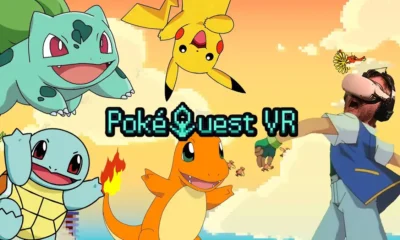
 VR Games6 months ago
VR Games6 months agoPokequest VR
-
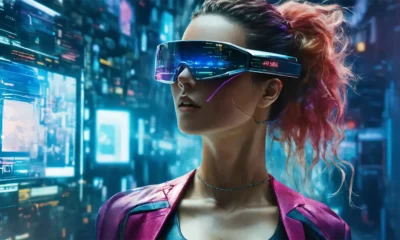
 PS4 VR6 months ago
PS4 VR6 months agoExperience the Future of Gaming with PS4 Virtual Reality
